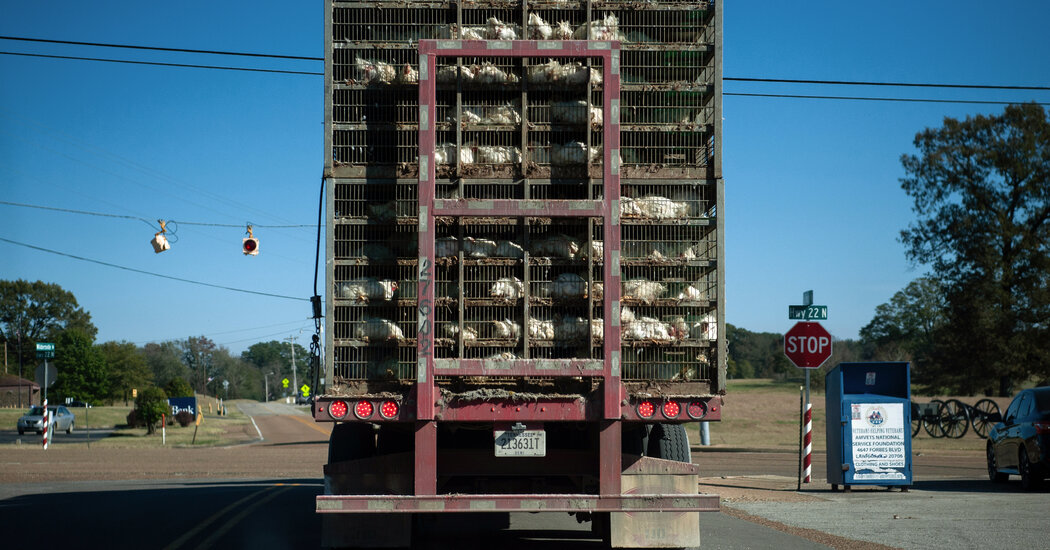
The bird flu virus that is spreading through American dairy cows can probably be traced back to a single spillover event. Late last year, scientists believe, the virus jumped from wild birds into cattle in the Texas panhandle. By this spring, the virus, known as H5N1, had traveled hundreds of miles or more, appearing on farms in Idaho, North Carolina and Michigan.
The virus did not traverse those distances on its own. Instead, it hitched a ride with its hosts, the cows, moving into new states as cattle were transported from the outbreak’s epicenter to farms across the country.
Live animal transport is essential to industrial animal agriculture, which has become increasingly specialized. Many facilities focus on just one step in the production process — producing new young, for instance, or fattening adults for slaughter — and then send the animals on.
The exact number of chickens, cows and pigs being transported on trucks, ships, planes and trains within the United States is difficult to pinpoint because there is no universal national system for tracking their movement.
But estimates from official sources and animal advocates offer a sense of the scale: In 2022, some 21 million cattle and 62 million hogs were shipped into states for breeding, or feeding, according to the Agriculture Department; these figures do not include poultry, movement within the same state or journeys to slaughter. That same year, more than 500,000 young dairy calves, some only a few days old, were shipped from just six states, according to the Animal Welfare Institute, a nonprofit group. Some traveled more than 1,500 miles.
“The movement can contribute to long-distance transport of pathogens and make outbreaks, and the management of outbreaks, challenging,” said Colleen Webb, an expert on livestock epidemiology at Colorado State University.
